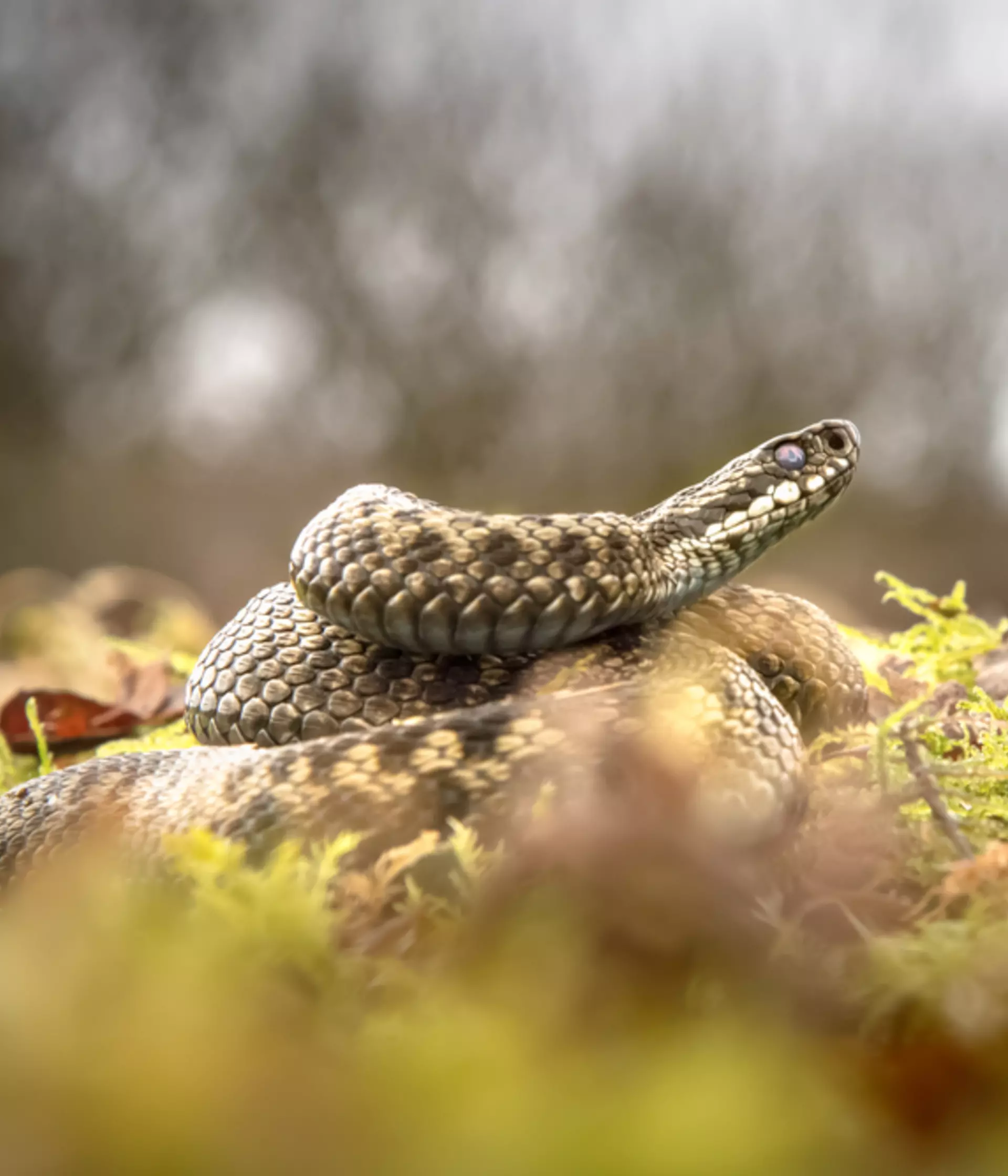UK's only venomous snake
The adder is the UK's biggest venomous animal, but they are rarely a threat to people or dogs. It is one of three native snakes in the UK, along with the grass snake and smooth snake. Adders are very shy animals, and try their best to avoid contact with with people and larger animals because they have many predators like crows, pheasants and birds of prey. It's estimated that around 50 adder bites happen a year, and very few require any medical treatment.
Adders are small snakes, only growing up to 75cm long. They eat mice, voles, and even lizards, but only eat around 6-10 times in a year. In winter they hibernate like all reptiles in the UK, often returning to the same log pile or tree stump.
UK adder population
The adder was once a common sight in large parts of the British countryside but in the last decade it has slipped into decline. Surveys suggest a third of remaining adder populations may comprise fewer than ten adults.
We believe this is down to the disappearance, degradation and fragmentation of habitat, resulting in smaller and more isolated populations of this enigmatic reptile. It is feared that these populations, particularly in the English Midlands, are not able to maintain a healthy level of genetic diversity, their resilience to disease will be reduced and a concentration of genetic defects could occur, leading to local extinctions.
Our team of snake experts obtained genetic samples from adders for the first time. This simple, harmless test involves taking a DNA swab, which can be used to determine current levels of genetic diversity.
Dr Trent Garner, Senior Research Fellow at ZSL’s Institute of Zoology said: “Genetic diversity has been shown to be a key component for successful adder populations in Sweden and Hungary, but has yet to be studied in the UK. Our goal is to provide the first insights into how population size and isolation may be related to genetic diversity of the UK’s adders.”
Our cutting-edge research and field work is helping recover reptile and amphibian populations across the globe. Learn more about our work with Chinese giant salamanders, mountain chicken frogs, and discovering news species.
